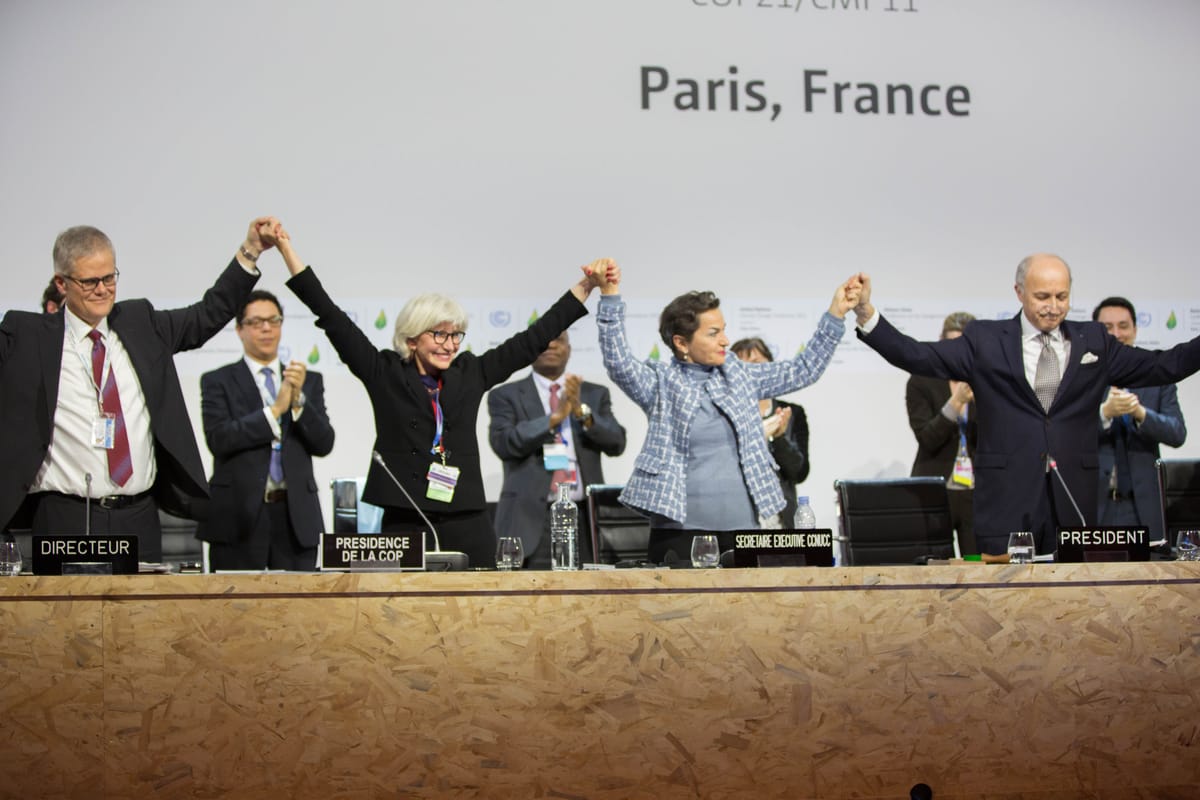In January 2008, global rice prices shot to record highs. Shipping costs, a multi-year Australian drought, and erratic weather in Asia choked yields. In producer countries, the fear of dwindling stockpiles prompted the governments of India, Vietnam, Brazil, Egypt, and elsewhere to halt exports, safeguarding their own supplies but propelling prices up to four times higher than normal.
This meant trouble for countries reliant on foreign rice. Senegal, for example, has depended on grain imports since the 1800s when its French colonizers steered Senegal’s agriculture toward cash crops like peanuts, and instead imported rice from France’s Asian colonies. In 2008, the impact of these past decisions was civil instability: people protested against political leaders as many could not afford rice.
For most outside observers, this was bad enough, yet when the scarcity ended we quickly forgot about the crisis. But to Ariadna Anisimov, a postdoctoral researcher at the Institute of Development Policy at the University of Antwerp, this example is a quintessential case of “transboundary climate risk” that the world is ill equipped to handle in the future. For her, the link between climate change and societal instability couldn’t be clearer.

What makes the cautionary rice tale prototypical is its demonstration of not just the tangled web of climate and livelihoods around the world, but also the global consequences of domestic policies. Export bans shielded the producer at the expense of the market. For an importing country like Senegal to become self-sufficient in rice, they’d need major agricultural changes. But climate change was already affecting farmer’s yields through more variable rain and more salt in groundwater; and irrigating with river water remained both a touchy subject with neighboring countries and flooding risk.
“Rivers have been shifted, and turned, and irrigated to make barrages and hydropower,” Anisimov told me. “There's always competing interests between the upstream and the downstream communities, and they have a lot of cascading effects, especially because rivers cross borders.”
Climate change's drivers and hazards don't obey borders, yet the laws and regulations meant to control them are confined within national boundaries. So how do we reckon with the fact that necessary climate action may be incompatible with how our entire world is organized?
Consider the hydrology of the Amazon rainforest. Deforestation there is not just a local problem: stripping the land of trees alters the movement of water in “flying rivers” above ground. In fact, the cloud masses aboveground contain more water than the Amazon river itself. That water flows beyond the rainforest and affects global currents. Yet despite the far-flung consequences, those burdened by a rainforest’s environmental management don’t all get a say in its current handling.
The current mode of international governance leaves us vulnerable to hyper-nationalist environmental management decisions (or inaction) that protect domestic resources but radiate consequences outward. According to a report Anisimov recently co-authored: Mismanaging the climate crisis locally heightens risk of vector-borne disease outbreaks; it can threaten food security from structural inequalities in agricultural supply chains; it can rapidly deplete ocean fish stocks; it can disrupt interconnected river corridors, energy networks, and supply chains to imperil the most disadvantaged populations. “What does it really mean to globally govern something that’s part of the global commons like the climate?” said Peter Schlosser, who directs the Global Futures Laboratory at Arizona State University. “It's a true dilemma.”
Climate change's drivers and hazards don't obey borders, yet the laws and regulations meant to control them are confined within national boundaries.
It’s clear that a system relying on discrete policy making within socially constructed borders is set up for climate failure. Some experts are paving the way toward an alternative. They are drawing optimism from precedents in global cooperation, such as treaties and international litigation. Others suspect that financial levers could provide the right incentives for collaboration.
It’s difficult to imagine what transborder climate action would even look like—but not impossible.
There are good examples of global governance. Sadly, they're few and far in between. The United Nations provides the most famous examples. In 1987, UN member states finalized the Montreal Protocol that curbed CFCs to rescue the ozone layer. Over the years and through a process known as UNFCCC (United Nations Framework Convention on Climate Change), nations have adopted agreements like the 1997 Kyoto Protocol and the 2016 Paris Climate Agreement pledging to curb emissions. Other treaties have matured since.
In December 2022, 196 nations vowed to protect biodiversity with the Kunming-Montreal Global Biodiversity Framework. The agreement set 23 targets to hit by 2030 in order to “halt and reverse nature loss,” including 1 million species facing climate extinction and billions of vulnerable people. Some targets implicitly require international cooperation, such as halving the introduction of invasive species, and others may run counter to insular nationalist interests, such as cutting harmful subsidies by $500 billion per year.
Then, last year, 76 nations signed another treaty to protect biodiversity in international waters, known as the High Seas Treaty, or Biodiversity Areas Beyond National Jurisdiction (BBNJ) Treaty. High seas have long fallen between the cracks, as they’re not within any one state’s legal right to abuse and not within any one state’s power to protect. The goal of the treaty is to help conserve ocean biodiversity in at least 30% of the ocean by 2030. But its future remains uncertain, as it won’t go into effect until 60 ratify it. As of March, 88 nations signed the treaty and 2 had ratified it.
Two encouraging recent examples of cooperation! Fantastic! Sorta. The obvious question remaining here is about enforcement. How do you make sure that the countries saying they’ll do stuff actually do that stuff? The world has fallen behind goals to reduce emissions, and the hazards are increasing unpredictably, so NGOs have stepped up in hopes of making it easier to enforce climate policies in the future—through research, investments, and the courts.

Enforcement is hard when you can’t fully trace the problem and risks. Organizations have called for more research in transboundary climate risks because our grasp of their nature, timescales, and solutions isn’t cutting it. Climate change’s cause and effect isn’t as straightforward as a story like “Oil company spilled oil, animals died, it’s their fault.” (Though even that story takes painfully long to sort out.) It’s notoriously hard to convince people that the damage from a weather event is part of climate change, and harder still to blame a particular emitter when the effects can be felt halfway around the world.
This means that global action depends on tracking progress of all the ways in which climate and the geosphere are changing over time.
Carbon emissions are the go-to metric of mitigation, but adaptation and resilience don’t have such straightforward indicators. “The vast majority of climate finance goes to mitigation,” said John Verdieck, director of international climate policy at The Nature Conservancy. “It's hurt finance for adaptation, because many investors and donors want indicators that can be measured and monitored.”
Verdieck’s team has proposed building out more indicators that we know affect life on this planet: local temperature reductions from green infrastructure, stormwater runoff volumes, infrastructure damage from climate hazards, the number of displaced people, income levels, and other metrics related to land use and livelihood.
Having good indicators makes it easier to set goals, track progress, and make international pledges.
“But it can't be just pledges,” Verdieck cautions. In a previous stint with the US State Department, Verdieck helped negotiate rules of the Paris Climate Agreement of 2016. (The Trump administration withdrew the US from the agreement. The Biden administration rejoined officially within the first month in office.) Verdieck notes that one important parameter in the agreement stipulates transparency in how nations meet their pledges. The problem is there’s not much of a punishment, or stick. “The stick is international reputation,” he told me.
This is known to be difficult territory. Back in 2019, the Brookings Institution published an article about environmental politics arguing that climate change is so sticky because “jurisdiction” is so hard to parse.
“When we are able to establish jurisdiction we are able to establish rules, laws, and accountability for adherence to the law–the three bedrock principles of modern democratic governance. In the absence of jurisdiction, everyone is accountable and therefore no one is accountable […] measurement in the absence of accountability is meaningless, especially in situations where many people are skeptical of cause and effect.”
Basically, the court of public opinion is worthless without the rest of an international justice system. The Brookings report suggested the usual remedies like funding tech fixes and scientific literacy, but anchored its advice with enforcement.
“Awareness without the ability to hold corporations, countries, and individuals accountable will not result in major action on environmental issues.”
The Kyoto Protocol had enforcement, but that strictness for developed countries came at the expense of the two biggest emitters, the US and China, rejecting it. (China was exempt from pledge requirements as a developing country.) “While there are attempts and there are actually agreements, making people voluntarily stick to them is tricky,” Schlosser told me. “Many countries, if they get under pressure to implement climate action, they often then simply extend deadlines. But we are in what I call ‘negative time.’”
Verdieck shares this fear about urgency. On one hand, the flexibility that convinced countries to sign the Paris Agreement has helped make some strides on climate since 2016. On the other, change is slow. “While we're bending the curve and starting to kind of turn the Titanic here, we're not doing it at the pace necessary,” Verdieck told me.
Verdieck is able to find some optimism, though, even within a global economy that often incentivizes making money over preserving the environment. “How do we build in more sustainable supply chains that make sure that there's a financial incentive to do the right thing?” he said. It’s about aligning climate goals with how the economy functions. One example from The Nature Conservancy’s work is in Brazil’s northern state of Pará, which is larger than France and Germany combined. The government of Pará has mandated tracking all cattle to prevent deforestation by offering incentives to ranchers.
Schlosser agreed that financial incentives might be vital, especially compared to doing nothing. We can incentivize carbon removal and sequestration more, or other technological innovations that end dependence on fossil fuels. Some also like to note the success of the Montreal Protocol, which phased out ozone-depleting substances, but the chemicals industry could produce the substitutes itself to comply. “You did not have to take down an entire industry,” Schlosser told me. “The climate problem is more complex.”
Climate action is an uphill battle while money rules the planet, which makes this feel unsolvable without a fairy-tale international government. Even the benevolent version of that dream says nothing about protecting Indigenous rights to self-determination. “One global government is really hard to imagine,” Schlosser said. “It has to be global governance.”
One potential mechanism for this governance is legal action—suing governments that neglect the planet. In April, an international human rights court ruled in favor of a group of Swiss women 64 and older who argued that European countries must do more to protect vulnerable people from heat waves driven by climate change. (Studies show that older women are the group most vulnerable to climate change-related health effects.) Experts called it “a turning point” as it was the first time an international court affirmed countries’ duty to protect their population in the climate crisis. And more cases lurk around the corner.
But even legal action is imperfect. “It is difficult to make a case against something that has not played out,” Schlosser told me. “The legal system is often not anticipatory.” There are no formal laws that specify what level of warming or emissions an international court could associate with particular dangers, or what corrective action is warranted. Consensus science could shape court opinion here for the better.
The same court issuing the landmark win for Swiss septuagenarians turned away a case by six Portuguese people aged 12 to 25 who argued that the 33 regional signatories of the Paris Climate Agreement are failing on their emissions commitments and therefore threatening their future health and wellbeing. The court decided that the applicants still had legal options within Portugal, so roping 32 other countries into the liability seemed like too slippery a slope.
I asked Anisimov if she was optimistic about global cooperation. After a six second pause, she answered: “I think no.”
The rise of right-wing populism in G20 countries worried her because such a narrow world view stands to short-circuit whatever global cooperation the world might muster. But then she tweaked her answer. “Why not imagine different ways of having cooperation that are not just about resource extraction but learning how to share ecosystems?” Anisimov told me. “We don't have to consider that the structures we've known for so long are the only ones we have.”
“I do believe in people,” Anisimov continued. Most people studying this space believe—or want to believe—that we’re not entirely doomed to live and die by border lines.
The 2008 rice crisis signaled how climate change disrupts decision-making in a world of borders. As the stakes get higher, the pressure to set the right precedents for international obligations will too.
In a news release about the Portuguese case, the court claimed that accepting the argument would expand member states’ responsibilities “towards people practically anywhere in the world.” Perhaps global responsibility is too utopic an ideal for now.



